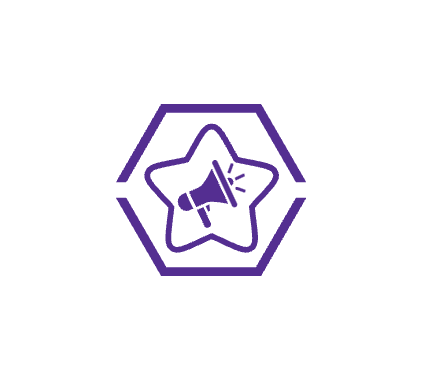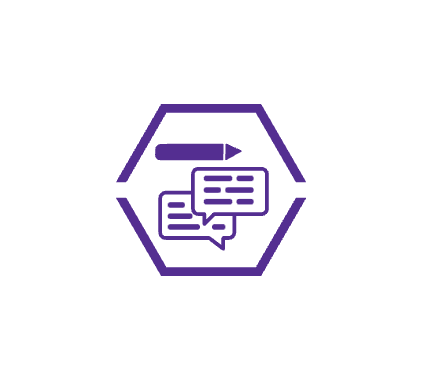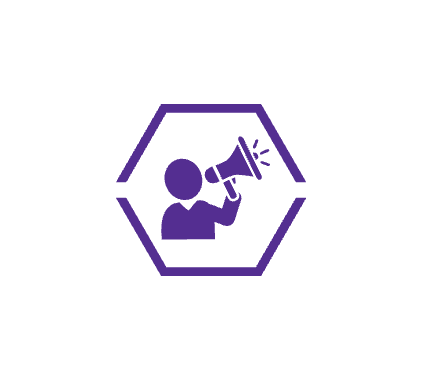23 Content Marketing Tips for 2023

We are now well into a tricky year for marketers, so it’s critical that companies attract high-value audiences to their content. It can be hard to know where to start, however, which is why we’ve built a tip sheet to help your business kickstart your 2023 content marketing strategy.
1- Create a Content Plan
Outline the topics and formats of your content in advance with a content plan. By doing so, you can ensure that the right resources are in place to deliver timely content for your target audience.
With your target audience in mind, brainstorm a list of topics that will resonate with them. After that, it’s a case of deciding which format best suits each area, such as blog posts, infographics, or videos.
2 – Create a Predictions Blog
A predictions blog is a great way to position your company as a thought leader in your industry and build trust with your target audience. Offering insights and predictions about the future of your field demonstrates your expertise and provides valuable information to your readers.
Of course, making accurate predictions is easier said than done. To maximize your accuracy, start by researching your industry’s latest trends and developments to identify key drivers likely to shape its future. With that information in hand, you should have a strong base on which to build your predictions.
3 – Vary Your Content
To avoid boring your audience, use a variety of formats such as blog posts, infographics, videos, whitepapers, e-books, and webinars.
That variety should extend to the way you publish your content. Make sure you post on multiple platforms and channels to reach as many people as possible and make it easy for your audience to share your content even further.
4 – Create a Podcast
Podcasts are currently one of the buzziest forms of content, with 38% of Americans having listened to a podcast in the last month and 26% in the last week. As such, creating a podcast is a great way to reach a larger audience and build a dedicated following of listeners around your brand.
The collaborative nature of podcasts also enables you to invite experts from your industry onto your show, resulting in mutually beneficial publicity for you both while proving your credentials as a thought leader.
Take a look (and listen) to the Instinctive Solutions Podcast — In The Pod — where we explore a myriad of marketing-related topics.
5 – Refresh Previous Case Studies
Case studies are an excellent asset in your own content marketing plan, demonstrating the real-world effectiveness of your business and the strength of your relationships with customers. If you leave them to languish, however, they can fall out of date and give your brand the wrong impression.
Refreshing previous case studies keeps your marketing materials up-to-date and relevant and ensures that they accurately reflect your current offerings and capabilities. It can also provide an opportunity to check back in with your customers and hear more about their accomplishments.
6 – Create a Top Influencer List
A list of the top influencers in your industry is a valuable tool for building relationships. Not only that, but the information you uncover in the research process will illuminate the major competition in your sector.
Use online tools such as Google, LinkedIn, Twitter, and other social media platforms to identify individuals or organizations who are recognized as thought leaders in your industry. Look for people who regularly produce high-quality content and have a strong reputation and evaluate their influence using metrics such as the number of followers or the size of their business.
7 – Get Topical
Remaining relevant is a constant battle, whether in terms of search engine rankings or the minds of industry peers. However, topical content can help alleviate this, providing you are up to date with the latest news and developments in your industry.
While content plans can help to keep your new material ticking over, you should refrain from mindlessly following them when presented with a juicy opportunity. Instead, you can make it easier to create content that is relevant to current events, trends, or issues in your industry by:
- Subscribing to relevant news sources, following industry leaders on social media, and attending relevant events and conferences
- Identifying trending topics with tools like Google Trends or social media platforms
- Publishing content as soon as possible after a relevant event or trend appears
8 – Be Consistent with Branding
Developing a loyal following requires consistency, which helps to establish a clear and recognizable image of your business.
If you don’t already have a style guide, you should create one that defines your brand’s design, such as colors, fonts, and imagery. Your content should also have a distinct tone of voice and follow brand guidelines.
9 – Make Use of Video
Videos are among the most engaging types of content. Indeed, using videos in email campaigns may lead to a 200% increase in click-through rates and boost conversions by 80%. Videos have a different impact than the written word and are particularly helpful for product demonstrations, interviews, and promotions.
Using video content is also an effective way to increase engagement, because of the lower barrier to entry when compared to written text. Make sure to optimize your content for social media platforms by creating short, attention-grabbing clips that are well-suited for mobile viewing and social sharing.
10 – Get Your Team Involved
Don’t underestimate the power of employees when building your brand. Content shared by employees receives eight times more engagement than content shared by brand channels.
Getting your staff involved in your marketing efforts is also a great way to create a sense of ownership and buy-in among your team. Encourage your staff to create and share content that aligns with your brand, such as posting on social media networks like LinkedIn.
11 – Repurpose Content
By repurposing content, you can create multiple pieces with minimal effort. All your content assets — eBooks, webinars, infographics, sales presentations — have the potential to become blogs and vice versa.
Repurposing your content allows you to diversify your content portfolio quickly while also helping you to redeem less successful content by adapting it to a new format.
12 – Stick to a Regular Schedule
A regular schedule is key to building trust with your audience and motivating them to return. If an audience knows when to expect new content from you, they may make dedicated visits to your page instead of relying on the algorithm to flag up new additions for them.
Achieving regular uploads is made easier by a content calendar that outlines the topics, formats, and publication dates for your content. Thankfully, plenty of technologies are available to make regular uploads a less intimidating prospect. For example, blog post schedulers let you upload content ahead of time, while email marketing platforms allow for timed newsletter distribution.
13 – Avoid Jargon
The temptation when producing content tailored to a B2B audience is to become overly technical. Depending on your industry, a certain amount of jargon will likely be necessary as shorthand for common concepts—think MVPs in the IT industry—but writing inclusively and maximising your potential audience is good practice.
When discussing technical concepts, you might choose to use layman’s terms or metaphors to make concepts more readily accessible. In doing so, you can create a well-rounded marketing strategy that appeals to both technical and non-technical audiences.
14 – Run a Webinar
Webinars are a fantastic source of traffic and high-quality leads. They are also a wonderful way to engage and educate users about your business. Webinars are convenient, cost-effective, and significantly boost your authority as a thought leader. They are also a convenient way of humanizing your brand and showcasing the people behind the business.
Following a few simple steps will help make the most of any webinars you run:
- Create a slide deck and script, and prepare additional materials such as handouts or quizzes.
- Encourage audience participation by asking questions, conducting polls, or offering interactive elements during the webinar.
- Send a follow-up email to attendees with a recording of the webinar and the next steps they can take.
15 – Share Other Folks’ Content
In the choppy waters of 2023, it’s a good idea to resist the impulse to selfishly promote only your own content. Sharing other businesses’ content, even your competitors’, demonstrates to readers that your feed is more than just simple advertisements. Moreover, in doing so, you might build relationships and encourage other companies in your sector to share your content, exposing it to a wider audience.
Be careful, however, not to make it seem as if you are stealing the hard work of others. Always credit the source and include a link to their website or social media profile.
16 – Co-Author Content
Looking for an easy way to broaden your audience and breathe new life into your content? Consider working together with a partner on a blog or webinar. Doing so lets you share your mutual expertise and offer value to both audiences.
By sharing resources such as writers, editors, and designers, you’ll likely be able to produce high-quality content faster. And you’ll have the additional benefit of two networks to promote your content on, leading to increased exposure for you both.
17 – Create a Newsletter
Newsletters allow you to stay in direct touch with your audience and keep them informed about your business on a regular basis. The beauty is that any information you send goes straight to their inbox, bypassing all the algorithms that usually gatekeep content.
Because of this, newsletters are particularly suited to letting your audience know what is coming up for your business, such as promotions or campaigns, rather than thought leadership pieces.
Of course, the downside is that you first must build an email list. Encourage people to sign up through your website or social media, and consider including a call to action for the newsletter on other forms of content you publish.
18 – Build Tip Sheets
Everybody loves lists, and tip sheets are a great way of taking advantage of the phenomenon while providing value to your audience. Readers gravitate towards the easily digestible format and stay for the valuable information provided.
Creating a numbered list makes the information easier to parse and recall. Remember to include a clear call to action, such as a link to a relevant resource or a contact form at the end to make the most of the visitors you attract. 
19 – Go Back To Basics
As useful as some of the tips on this list are, the basics of content marketing are just as crucial to your success. First, make sure that your content is well-written and error-free. Then, use headings, subheadings, and bullet points to make your content easier to understand.
Simple as it may seem, make sure to proofread and edit your content before publishing it. Remembering the basics will help you create quality content, helping your audience see you as a reputable authority.
20 – Create a Consistent Voice
Even if multiple authors create the content you publish, you should endeavour to create a consistent voice. Start by identifying a tone and personality that best represents your brand, target audience, and industry. Ensure the variety of English spelling you use matches your audience, too.
Once you have guidelines in place, assign a person in your team to review and proofread all content before it’s published.
21 – Tell A Story
Just because you’re writing blogs in a B2B capacity doesn’t mean you can escape the age-old rules of storytelling. No matter the subject, ensure that the story has a clear and interconnected beginning, middle, and end capable of taking your audience on a memorable journey.
Storytelling can be used in more than just written content, being equally applicable in videos, infographics, and social media posts.
22 – Build a Community
Encouraging comments and engagement on your content is a great way to start building a community around your brand. Properly managed, this could increase brand loyalty, engagement, and even sales.
Start by creating content that inspires conversations and encourages engagement. For instance, create questionnaires, polls, and quizzes to prompt your audience to share their thoughts and opinions.
23 – Incorporate Calls to Action
Finally, ensure all your hard work isn’t wasted by incorporating calls to action (CTA) in your content. Without a link prompting your audience to sign up for a newsletter, download a free resource, or take any other action, you cannot convert readers into leads or customers.
It’s important to make the CTA clear and compelling with enticing language, such as “sign up now” or “download for free.” At the same time, make sure that the CTA is placed somewhere prominent—such as the end—and that it stands out from the rest of the content.

 Content Marketing
Content Marketing Messaging and Positioning Accelerator
Messaging and Positioning Accelerator Guest Expert Speaker
Guest Expert Speaker Reviews and Testimonials
Reviews and Testimonials Success Stories
Success Stories News, Awards & Recognition
News, Awards & Recognition Blog
Blog Podcast
Podcast